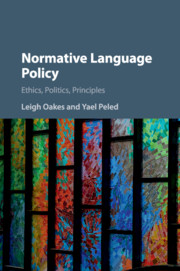Book contents
- Reviews
- Normative Language Policy
- Normative Language Policy: Ethics, Politics, Principles
- Copyright page
- Contents
- Tables and figures
- Acknowledgements
- Abbreviations
- 1 Introduction
- 2 Language policy and planning in Quebec: a brief overview
- 3 In defence of the vernacular: French in the age of global English
- 4 Linguistic citizenship: identity, integration and interculturalism
- 5 Pluricentric linguistic justice in Quebec: beyond the monocentric ideology
- 6 Normative language policy in a complex world
- Bibliography
- Index
- References
Bibliography
Published online by Cambridge University Press: 28 November 2017
- Reviews
- Normative Language Policy
- Normative Language Policy: Ethics, Politics, Principles
- Copyright page
- Contents
- Tables and figures
- Acknowledgements
- Abbreviations
- 1 Introduction
- 2 Language policy and planning in Quebec: a brief overview
- 3 In defence of the vernacular: French in the age of global English
- 4 Linguistic citizenship: identity, integration and interculturalism
- 5 Pluricentric linguistic justice in Quebec: beyond the monocentric ideology
- 6 Normative language policy in a complex world
- Bibliography
- Index
- References
Information
- Type
- Chapter
- Information
- Normative Language PolicyEthics, Politics, Principles, pp. 159 - 183Publisher: Cambridge University PressPrint publication year: 2017
